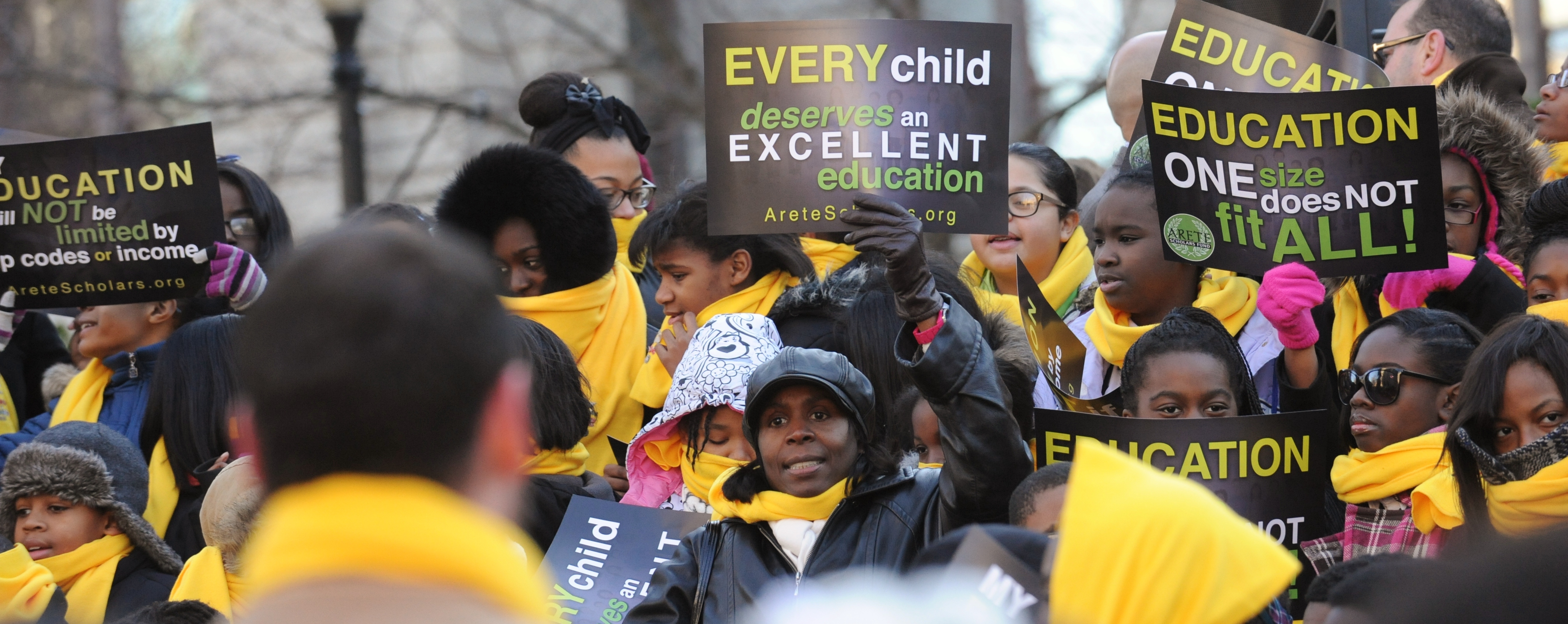Lamenting Missed Opportunities for Georgia Students
In the wake of the recently concluded legislative session, I found myself at a local charter school discussing school choice with a group of parents, teachers, and administrators.
While upbeat in many ways, the conversation was heavy with a feeling of barely-restrained desperation. It was in the air and occasionally expressed by a frown, joined with a shake of the head.
The school’s staff explained the wonderful academic success of their students, nearly all minorities and all female, despite the statistical odds stacked against this school and others like it. At the same time they lamented how the treatment of charter schools in Georgia, which are public schools open to all students, results in their receiving much less funding per student than traditional public schools and forcing them to bear substantial additional costs.
Fewer dollars and higher costs mean that charters often must forego offering classes that are taken for granted in most public schools. Fewer dollars and higher costs mean students go without other, seemingly normal, parts of school life, like a playground, a sports field, recreation equipment, etc.
How much less funding? By my calculation, it amounts to nearly 20 percent less per student per year for state-approved charter schools. It’s that much less, yet charters – by definition – are held to a higher standard of academic achievement than traditional public schools. Unlike traditional public schools that linger forever regardless of their instructional performance or the academic success of their students, charter schools actually close for failure to meet targets. Despite the disparity in how they’re treated, charters typically perform well.
What about those additional costs? The big one for charters is the cost of renting or buying a school building, a cost that traditional public schools do not have to shoulder that can run into the many tens of thousands of dollars each month. Behind teacher pay, this is one of a charter school’s largest expenses.
For the parents in the room who were all unsatisfied with their local, traditional public schools, the issue was a lack of real alternatives. While Georgia can boast that it has some educational options, including charter schools and some private school scholarship programs, the reality is that those options are unavailable to most families.
Why? The answer is that charter schools are not present in every community and those in operation only have enough seats available for a small percentage of the state’s 1.8 million students. In a similar fashion, private school scholarships are severely limited by funding caps (this year, the cap on the tax credit scholarship was reached in the first 22 days of the year) or, by design, target only a very small group of students. The result is that waiting lists for these schools and programs often far exceed the actual number of students they are able to serve.
So what does this have to do with the legislative session, you might ask?
Well, if you were to just look at legislation that actually passed this session, you would be right to conclude that our legislature has little to do with or concern for the school choice needs of families in Georgia. You’d likely conclude that because, quite literally, nothing much happened to expand choice or to right the inequities in current education choice programs.
Now, if you followed the session from the beginning and paid close attention, you would know that the legislature had the opportunity to make serious strides in reforming the system and expanding choice, including adding more scholarships for private choice, allowing charter schools to use vacant public school buildings, and allowing charter schools to quickly replicate without unnecessary bureaucratic hoop-jumping, among others.
Yet, each opportunity ultimately withered on the vine. The unusually intense power struggle between house and senate Republicans, coupled with the active efforts of at least one committee chairman to kill school choice legislation, meant that nothing very meaningful survived to see the Governor’s pen.
So the children who desperately need a lifeline tossed to them are left to flounder another year in a system they didn’t choose and can’t leave. The powers-that-be and the protectors of the status quo win another round.
Who knew a prison could be so effectively
erected using only a zip code?
Some say that reform was mostly stopped this year because of election year politics; and we hear from some elected officials that next year will be different. After all, they say, we can’t do anything controversial in an election year; we can’t afford to anger the wrong constituency.
But wait, bills related to gun rights and abortion were hardly uncontroversial, yet they passed. Favors were called in and political capital was spent to insure their success. So being “controversial” couldn’t be the excuse….right?
Could it be, instead, that the parents of children most in need of rescue from failing schools vote neither often enough to warrant the risk, nor in the “right” way when they do? A skeptic – this skeptic – might answer “yes.” It’s difficult to come to any other conclusion. Of course, it doesn’t help that these same families are not typically campaign donors either.
It takes real courage to stand up to entrenched thinking in public education and I’m thankful for those few, brave elected officials who have done so, because they are truly standing up for our children. They recognize that few things in life offer an escape from poverty and a path to self-sufficiency as effectively as a quality education. But, what’s more, they understand that elections, holding office, and wielding power are not simply ends in themselves.
Here’s to hoping they receive reinforcements very soon because the children of Georgia can’t afford to continue to wait.

